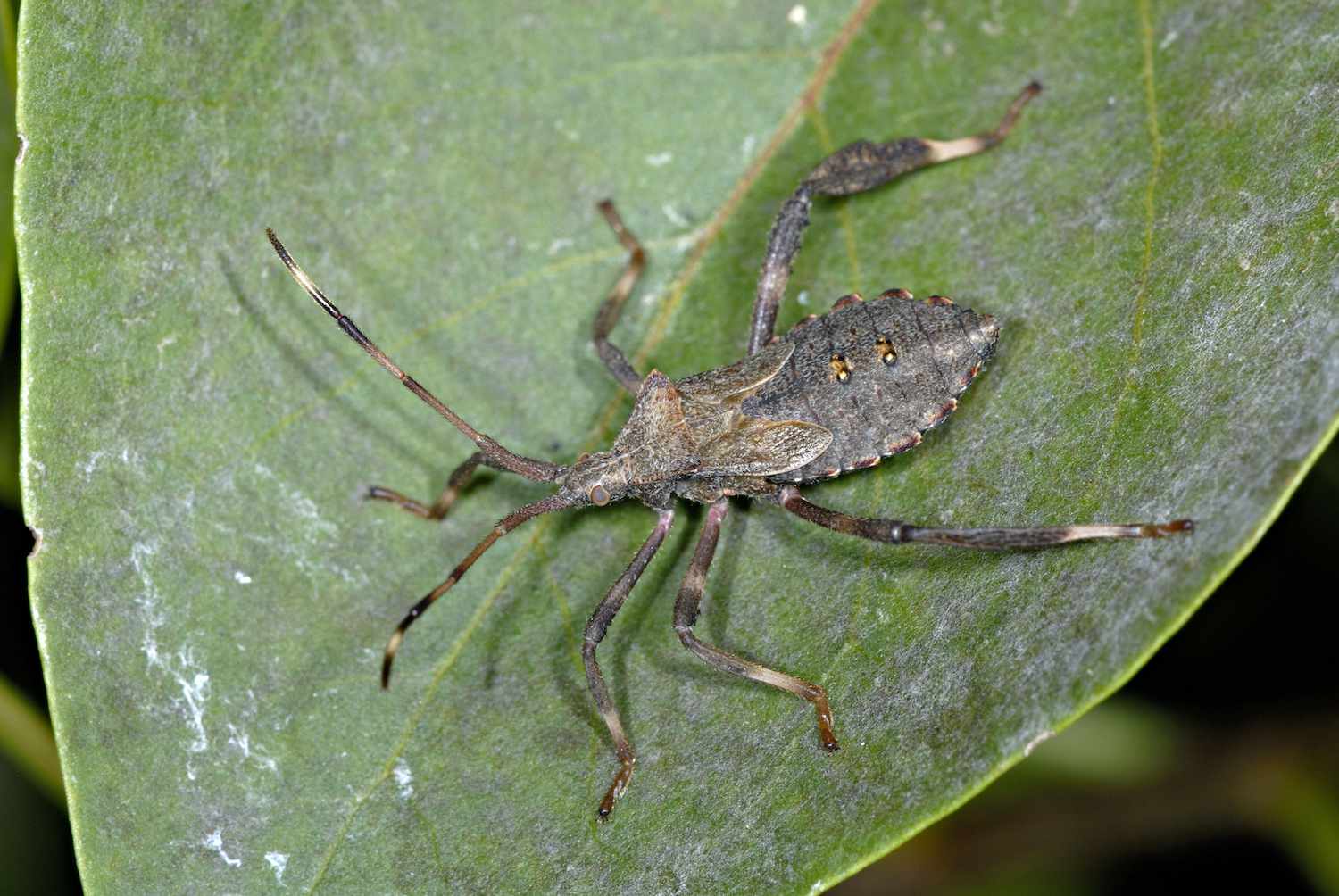It occurs in coastal areas and high ranges in Kerala (Trivandrum, Wayanad, Kasaragod).
Symptoms of Damage:
The adults and nymphs feed by extracting sap from the contents of button and developing nuts below the perianth region. Infested buttons show deformities with distinct crevices on the husk beneath the perianth, accompanied by gum exudations. Tender nuts affected by this feeding may fail to develop properly. In severe cases, the damage can cause premature nut drop and result in malformed mature nuts.

1.Deformed coconut
2.Cervix on husk
Identification of the Pest
The adults are brown colored measuring 2 cm in size. The life cycle is completed in a month's time.

Paradasynus rostratus
Management
Chemical Method
Remove and destroy immature insect stages through regular inspections or a neem campaign whenever feasible. Also, apply carbaryl 50 WP at a concentration of 2 grams per liter.After female flowers have reached their receptive phase, apply a 0.1% carbaryl suspension to newly opened inflorescences. Apply this to the entire crown, excluding leaves and older bunches, at 45-day intervals. To avoid harming pollinating insects, spray in the afternoon hours.Alternatively, spray dichlorvos 76 WSC at a rate of 2 milliliters per liter.
Mechanical Method:
Set up light traps to trap and collect adult moths.
